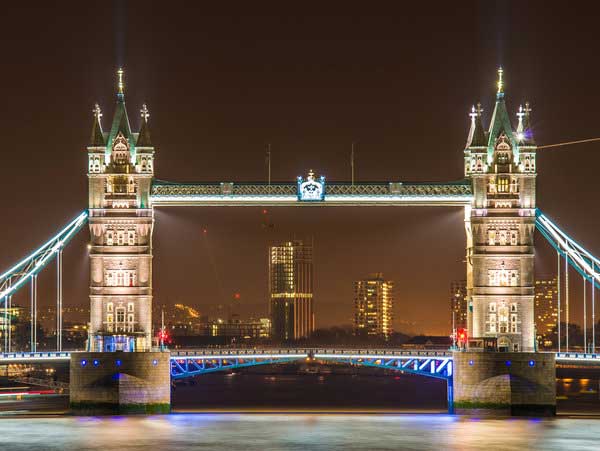London is one of the most coveted and valuable capital cities in the world today. This iconic city can trace its origins back nearly 2,000 years to its founding by the Roman Empire. In this article, we’ll explore London’s rich history, geography, architecture, culture, economy, and daily life to help you understand why it continues to captivate people globally.

The Origin of the Name “London”
The name “London” has been passed down since the city’s establishment by the Romans. The term “Londonium” first used by the Romans is thought to mean “flowing river,” likely referring to the River Thames which cuts through the capital. This connection between London and its iconic river remains to this day.
A City of Monarchs and Influencers
As the capital of England and the wider United Kingdom, London has long been inhabited by royalty and influential figures who’ve left their mark. Monarchs from King Henry VII to Queen Victoria have resided in London, using Buckingham Palace as their home base. The tradition of monarchy centered in London persists today.
London’s important status has helped it lead advancements in finance, industry, music, sports like football (soccer), and other areas since Imperial times. The capital’s outsized role has drawn in migrants from around the world throughout its history.
A Vibrant Melting Pot
In fact, modern London is renowned as a diverse melting pot, with over 300 languages spoken across the city. Well-defined enclaves like Chinatown or Little India allow immigrants to maintain connections to their home cultures. You can just as easily find French cuisine or Italian food as you can fish and chips.
Home to 9 Million Residents
London’s small land area of 1,572 square kilometers belies its massive population of 9 million people. That gives London a far greater population than the next largest UK cities of Birmingham and Manchester. Let’s zoom out briefly to understand London’s geography within the UK.
London’s Geography in the UK
London sits in the southern part of the UK, concentrated in the country’s southeast corner. Thanks to this southerly position, London enjoys warmer weather than northern England cities, with closer transport links into mainland Europe. London holds an important strategic location.
The Winding River Thames
Like Moscow, London features a key river winding through its middle. The River Thames stretches over 50 kilometers east to west across the capital. It effectively splits London into northern and southern halves, necessitating bridges for transportation. London Bridge is arguably the most iconic of these river crossings.
Lush Green Parks
London’s Thames River enables lush green parks across the city. These public spaces like Richmond Park, Regent’s Park, and Hyde Park provide visual appeal while allowing residents to de-stress. The many high-quality parks contribute to London’s popularity for work and living.
No Direct Sea Access
Despite assumptions, London does not border the English Channel or have direct sea access. Reaching beach towns like Southend-on-Sea requires heading east of London. British locals tend to vacation along Mediterranean beaches, benefiting from the powerful British passport strength.
An Island Capital
London’s special status as an island capital provides strategic advantages. The UK requires no large land borders to police. Instead, the country benefits from protective bodies of water plus close cultural connections between its constituent parts.
Accessible by Air and Tunnel
Visitors can reach London by air or train tunnels under the English Channel. Eurostar train links allow quick travel from Paris, Brussels and elsewhere. These transport options mean London avoids isolation despite being surrounded by water.
Iconic & Preserved Architecture
Centuries of relative safety from land invasions have allowed iconic London architecture to remain standing. Structures like the Westminster Palace and Tower Bridge have become visual emblems of London for the world. Even with modern development, the city’s historic buildings anchor its appeal.
Getting Around London
London covers a compact area, meaning cars aren’t always necessary. Walking and the extensive Underground metro system connect the city. Iconic black cabs offer visitors a fun way to travel. Just be warned – traffic drives on the left side of the road in Britain!
Local Culture & Cuisine
Immersing yourself in local culture is a must. The traditional English Breakfast or High Tea give you a taste of London. And with rain always a possibility, carrying an umbrella comes second nature to locals. London rewards visitors who slow down and sip in all it has to offer.
Distinct Architecture
London’s architecture differs from other European cities, often featuring stone castles and palaces. Buildings display cream, grey or subtle red hues rather than vibrant colors. At night, the wet streets and stone buildings give off the aura of a movie set.
A Lively Social Scene
Far from stuffy, London brims with nightlife around venues, markets and festivals. Street musicians and a diversity of multicultural residents and immigrants lend an energetic urban pulse. London rewards those looking to have fun just as much as those seeking heritage.
Cost of Living in London
Of course, London’s desirability impacts the cost of living. Housing is enormously expensive, with small flats starting around £2,000 per month. Living comfortably requires an income of around £4,000 per month. However, salaries for professionals can reach over £3,000.
In Conclusion
As the largest city in the UK, London has rightfully earned a reputation as one of the world’s most exciting global cities. From its long history to its iconic sights, diversity, cuisine, architecture, and beyond, London offers seemingly endless aspects to experience. Visiting and living in London remains a dream for millions globally.
